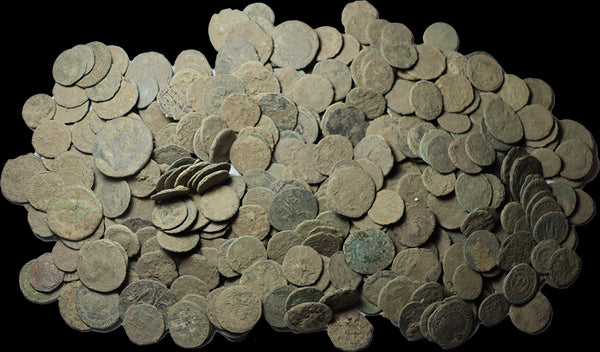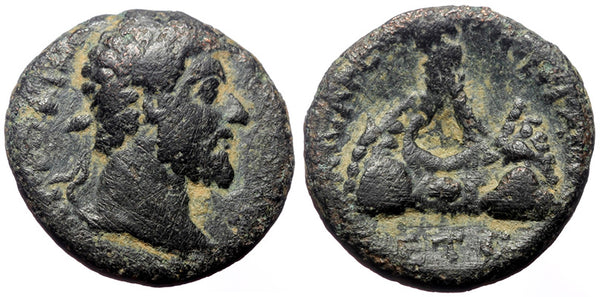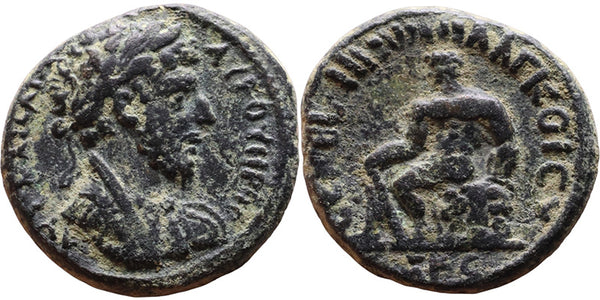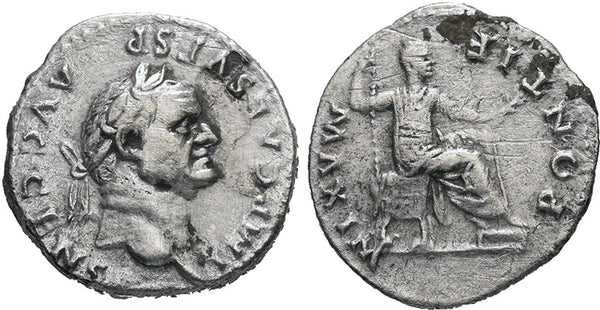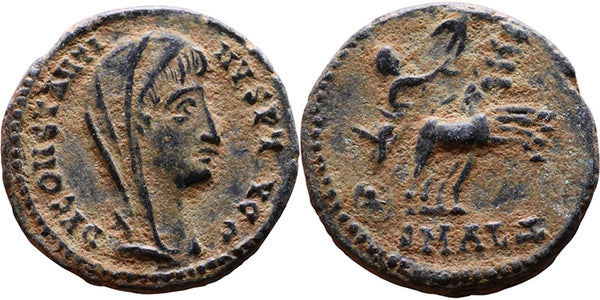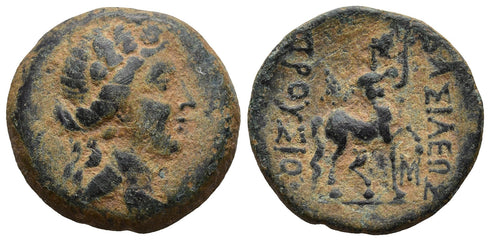
Ancient Greek bronze coin of King Prusias II of Bithynia 180-149BC - Dionysos with Centaur
Greek coin of King Prusias II Cynegos
Size: 21.9mm Weight: 6 grams
Obverse: Head of Dionysos right, wearing ivy wreath
Reverse: AΣΙΛΕΟΣ / ΠΡΟΥΣΙΟΥ The centaur Cheiron advaning right with lyre; at feet to right, monogram
Waddington, RG 26; HGC 7, 629; cf. SNG Ashmolean 454-465
The Kingdom of Bithynia (Ancient Greek: Βιθυνία) was a Hellenistic kingdom centered in the historical region of Bithynia, which seems to have been established in the fourth century BC. In the midst of the Wars of the Diadochi, Zipoites assumed the title of king (basileus) in 297 BC. His son and successor, Nicomedes I, founded Nicomedia, which soon rose to great prosperity. During his long reign (c. 278 – c. 255 BC), as well as those of his successors, Prusias I (r. c. 228 – 182 BC), Prusias II (r. c. 182 – 149 BC) and Nicomedes II (r. c. 149 – 127 BC), the Kingdom of Bithynia prospered and had a considerable standing and influence among the minor monarchies of Anatolia. But the last king, Nicomedes IV, was unable to maintain himself in power against Mithridates VI of Pontus. After being restored to his throne by the Roman Senate, he bequeathed his kingdom through his will to the Roman republic in 74 BC and it became the province of Bithynia et Pontus in 63 BC.
The coinage of these kings show their regal portraits, which tend to be engraved in an extremely accomplished Hellenistic style.
SKU: 3527
Hurry! Only 1 Left in Stock!


